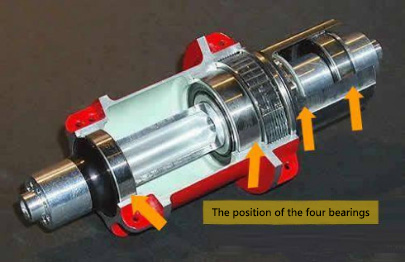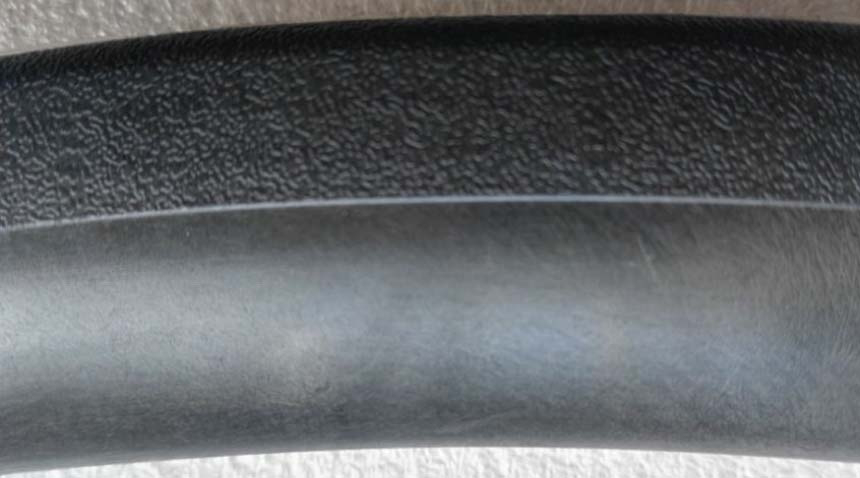Select the soft tail mountain bike
How to pick soft tail mountain bikes
Some people think soft tail mountain bikes are not good enough for mountaineering. The reason why they think so is probably that they haven’t carefully chosen a soft tail frame with a travel below 4”,which is used for mountaineering and climbing. Even though it is VPP from Intense Group, the pedaling of the bike frame with big travel doesn’t mean the pedaling for climbing. The pedaling performance of a bike frame with big travel is put forward based on acceleration. For example, after you pass a curve, you should accelerate right away. Whether the bike is suitable for climbing is not only the problem of ‘strength releasing’, the angle of the complete bike and the weight will probably affect the force exerting when you cycle uphill.
The important role of the soft tail bike frame is to withstand the jolt and take advantage of suspension to offset the irregular leap of wheels which is caused by the bumpy ground. Make tires touch the ground tightly all the time so that you can drive or brake. At the same time, the good stability of the bike will be easy for cyclists to pedal and handle. Only the bikes are stable enough, you dare to cycle faster or you can cycle faster- whatever you cycle uphill or downhill. The purpose of soft tail bike frames is to make you stable and provide a control platform for you to pedal. The bumpier the complicated roads are, the more soft tail bikes are required. This point is applicable to not only large travel, but also small travel.
How to choose a soft tail bike frame and confirm the travel you need is closely related to your demands for mountain bikes. How is the bumpy extent of the road you cycle? How much speed do you want to reach? These factors will decide the size of your travel rather than the gradient will. The bike can also go down slowly if you pinch the brakes of hard tail XC on DH roads. You can hump the bike if there is a drop in some places. So whether you need the hard tail depends on the speed you want to reach rather than the gradient. The bumpier the road is and the faster you want to be, the larger the travel you need is. If the mountain road is natural enough, it is bumpy all the time. There is no absolutely smooth mountain road.
There is no absolute hard tail about the concept of mountain bike. Even the tire can provide the effect of 100-mm hard tail, let alone the carbon frame, which is publicized as a soft tail with 1” travel. The reason why hard tail is expensive is its “softness”, which means it has excellent performance of triangular longitudinal deformation and can withstand the jolt. Although the bike frame with small travel is not good at withstanding the jolt, its weight is light and its angle is suitable to pedal, so it is suitable for climbing. With the increase of the travel, the bike frame’s ability to withstand the jolt will strengthen, but the weight of the bike frame will definitely increase and the angle should take the handling rather than pedaling into consideration. So it will be more and more suitable to accelerate with the help of earth gravity when you cycle downhill.
Then how to choose it? If the bike frame with the travel below 4”is equipped with the 80-100mm front fork, the weight of the complete bike will be easily below 10.5 kg, and its pedaling feeling will not be worse than the pedaling feeling of hard tail in terms of angle and rigidity. At the same time, the strength of driving and gripping the ground will be stronger. We suggest that people who like cycling uphill at an amazing speed should choose 4”and below. These kinds of bike frames are also very common at world championships, and what we mentioned above is just the conditions of soft tail whose size is below 4”. If the bike frame with the travel below 4.5”, 5 ”or 5.5” is equipped with the110-140mm front fork, the weight of the complete bike will easily reach 12.5 kg or within 12.5kg. It achieves more perfect resistance ability at the same time of sacrificing some ‘assault’ properties when cycling uphill. You can continue to exert your strength when you are pedaling.
…is the main type that my peers will use for “mountain”. We suggest that people who are not eager for the cross-country race and mainly play rally and like crossing all kinds of places can choose this kind of bike, which is called ‘being able to work at both higher and lower level without any complaint’. If the bike frame with the travel of 6” or about 6.5” is equipped with the 140-160mm front fork, the weight of the complete bike is basically 13 kg to 14 kg. Now you can feel tired when pedaling and the uphill speed begins to be greatly affected, but it still has the perfect passing properties and begins to support technical leap. It begins to show the properties of going downhill at an amazing speed, going uphill and downhill without any complaint when crushing. Cyclists begin to get rid of trembling with fear when facing a drop and they can deal with hairpin curves and curved walls with ease. People who pursue the feeling of flying, jumping and ‘handling’ can choose the bike frame with this kind of travel.
If the bike frame with the travel of 7”or 8.5” or 8.5”and over is equipped with front fork of 180mm, 200mm and over, please forget about climbing and just go seek the telpher. If you want to cycle uphill, you just need to pedal your bike in a casual way. There is no need for me to mention the weight of the complete bike because everybody knows about it. People who like pursuing excitement between falling on the ground and not falling on the ground and showing the attitude of ignoring the drop and big stones can choose this kind of bike frames. If you choose this kind of bike, don’t try to have a climbing race against people who have hard tail bikes. And they don’t like to have a race of cycling downhill against this kind of people as well.








 .
.




